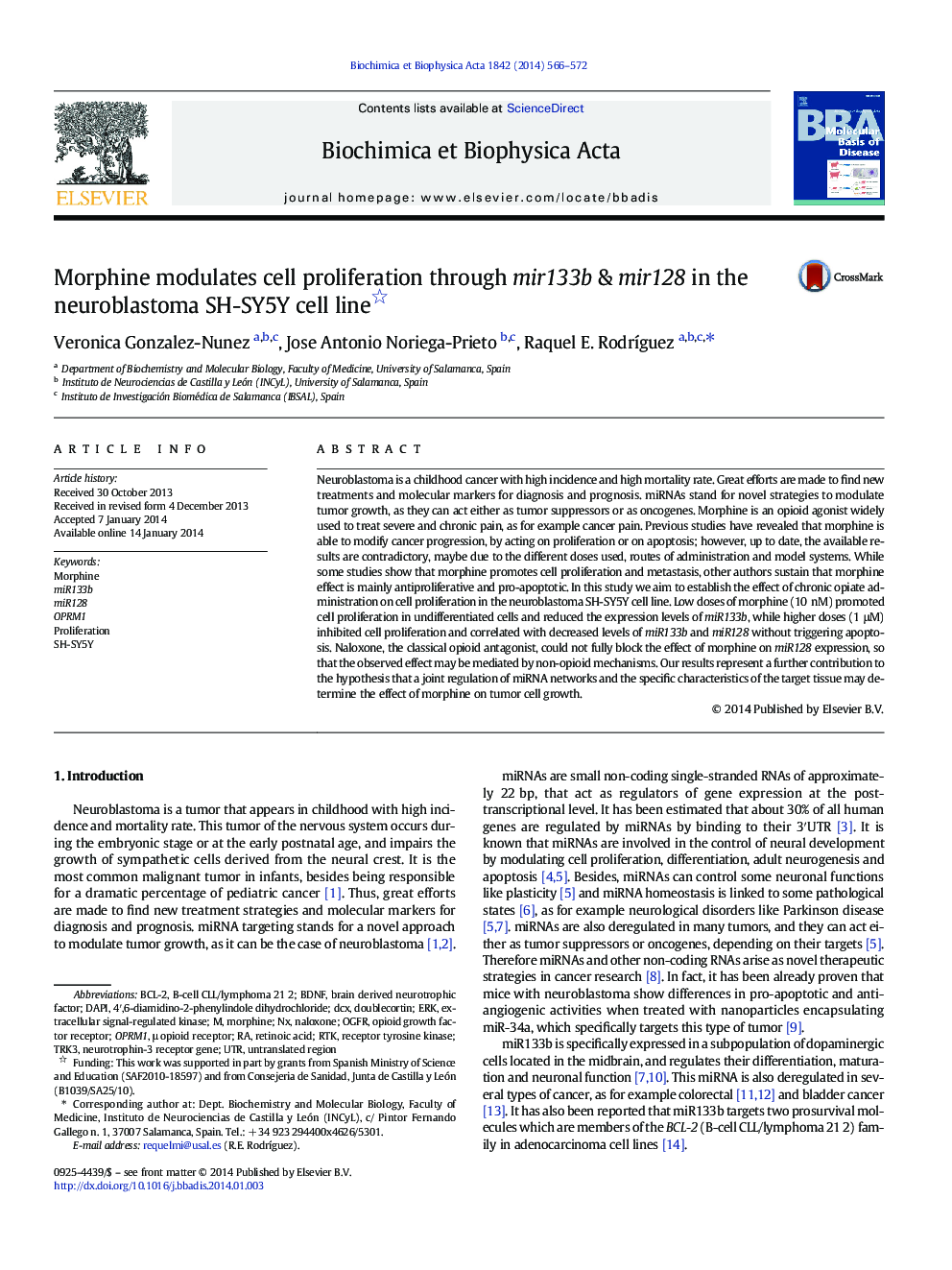| Article ID | Journal | Published Year | Pages | File Type |
|---|---|---|---|---|
| 8260357 | Biochimica et Biophysica Acta (BBA) - Molecular Basis of Disease | 2014 | 7 Pages |
Abstract
Neuroblastoma is a childhood cancer with high incidence and high mortality rate. Great efforts are made to find new treatments and molecular markers for diagnosis and prognosis. miRNAs stand for novel strategies to modulate tumor growth, as they can act either as tumor suppressors or as oncogenes. Morphine is an opioid agonist widely used to treat severe and chronic pain, as for example cancer pain. Previous studies have revealed that morphine is able to modify cancer progression, by acting on proliferation or on apoptosis; however, up to date, the available results are contradictory, maybe due to the different doses used, routes of administration and model systems. While some studies show that morphine promotes cell proliferation and metastasis, other authors sustain that morphine effect is mainly antiproliferative and pro-apoptotic. In this study we aim to establish the effect of chronic opiate administration on cell proliferation in the neuroblastoma SH-SY5Y cell line. Low doses of morphine (10 nM) promoted cell proliferation in undifferentiated cells and reduced the expression levels of miR133b, while higher doses (1 μM) inhibited cell proliferation and correlated with decreased levels of miR133b and miR128 without triggering apoptosis. Naloxone, the classical opioid antagonist, could not fully block the effect of morphine on miR128 expression, so that the observed effect may be mediated by non-opioid mechanisms. Our results represent a further contribution to the hypothesis that a joint regulation of miRNA networks and the specific characteristics of the target tissue may determine the effect of morphine on tumor cell growth.
Keywords
DcxOGFrSH-SY5YOPRM1RTKDAPIERKBcl-24′,6-diamidino-2-phenylindole dihydrochlorideBDNFμ Opioid receptorProliferationdoublecortinRetinoic acidbrain derived neurotrophic factorUTR یا untranslated regions untranslated regionmorphineNaloxoneextracellular signal-regulated kinaseReceptor Tyrosine KinaseOpioid growth factor receptor
Related Topics
Life Sciences
Biochemistry, Genetics and Molecular Biology
Ageing
Authors
Veronica Gonzalez-Nunez, Jose Antonio Noriega-Prieto, Raquel E. RodrÃguez,
